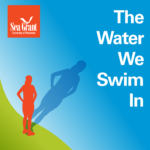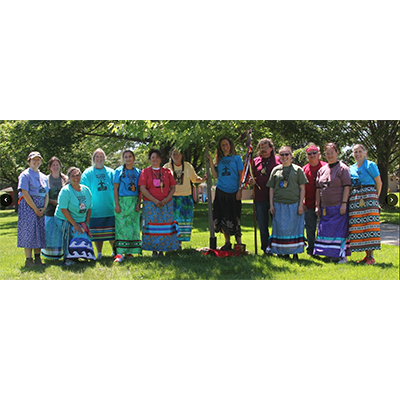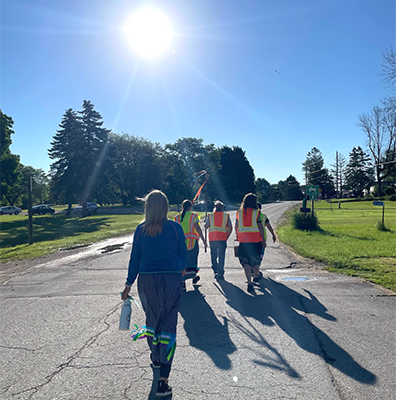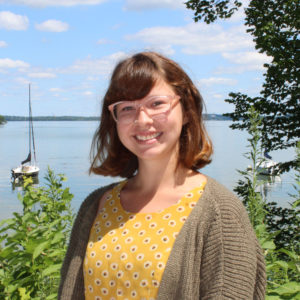Episode 8, 9/8/22
Water is life: Lake Winnebago

As the largest lake entirely within Wisconsin’s borders, Lake Winnebago spans nearly 132,000 acres across three counties. Fed by the Wolf and Fox rivers, it’s a place rich in significance for several tribal nations, including the Ho Chunk, Meskwaki, Fox, Sauk, Menominee, Oneida, Stockbridge-Munsee, Brothertown and others.
It is this importance to multiple nations that led Mark Denning (Oneida/Menominee) to describe Lake Winnebago and its tributaries as “international waters.” Said Jessica Ryan, vice chair of the Brothertown Indian Nation, who recounted hearing this comment from Denning, “That (statement) really stuck out to us… We know that all these nations have called these waterways home, but that was really impactful. This is how all the trading happened, and the water sustained us. It’s the lifeblood of Earth.”
Ryan is part of a team working on an effort known as the Lake Winnebago InterTribal Connectivity Project, which is receiving Wisconsin Sea Grant support during Sea Grant’s 2022-24 research funding cycle. Her partners in this work include Dr. Jessie Conaway of the University of Wisconsin-Madison; Skip Blanc, a Brothertown tribal council member; other members of the Brothertown Nation, and a team of students and agencies.
While still present, particularly in Lake Poygan (just west of Lake Winnebago), wild rice is not what it used to be in the area. Ryan recounted coming across an old journal that described Lake Winnebago as “teeming with rice such that the boats could not pass.” That vivid image stuck in her mind due to its disconnect with current reality.
“I want to see the rice restored, but I don’t know if that’s practical; I don’t know if it can be done long-term,” said Ryan. Yet it is a cherished goal given the cultural importance of wild rice to many peoples (and also its importance to other living beings that depend on it).
On this episode, we speak to the Lake Winnebago InterTribal Connectivity Project team as they embark on a multi-faceted, collaborative effort to assess water quality, sediments and wild rice habitat in Lake Winnebago. Said Blanc of the wide-ranging effort, “It’s going to take all of us, Native and non-native, from all spectrums of life to do this.”

The Brothertown Nation began the annual Lake Winnebago Water Walk in 2015. Since then, the Water Walk has been an important ceremony for Indigenous communities to come together to pray for and care for Lake Winnebago.

Jessica Ryan explains, “As we make our journey by foot around that lake, we take turns in a collaborative way, working together, to put our prayers into that water for healing, for understanding, and for all those things that are necessary to have a better outcome for the water, which is our lifeblood.”
Thanks to our guests
Jessica Ryan, Brothertown Indian Nation
Skip Blanc, Brothertown Indian Nation
Dr. Jessie Conaway, UW-Madison
Ashley Gries, Institute for Tribal Environmental Professionals (ITEP), Northern Arizona University
Links
Brothertown Indian Nation (Eeyamquittoowauconnuck)
Meet Josephine Mandamin (Anishinaabekwe), The “Water Walker”
Ho Chunk history of Lake Winnebago
Menominee Place Names in Wisconsin
The Ojibwe People’s Dictionary: wiinibiigoo
Oneida pronunciation: kanyataláheleˀ
Northern wild rice
Southern wild rice
Manoomin Education and Outreach Toolkit
Credits

Bonnie Willison | Host
Video Producer
What I do at Sea Grant
As the videographer and digital storyteller, Bonnie uses her video and animation skills to showcase the stories of Wisconsin Sea Grant.

Hali Jama | Host
Student Podcast Producer
What I do at Sea Grant
Hali brings her background in social justice, business and marketing to Wisconsin Sea Grant, where she is the co-producer and co-host of The Water We Swim In.


